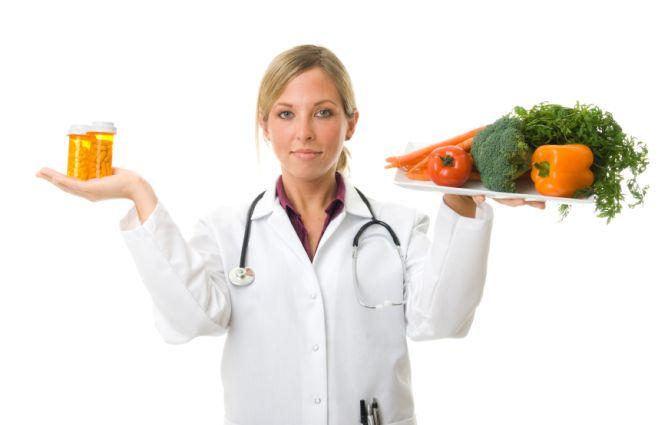Diet after brain stroke guidelines:
The most common cause of stroke is atherosclerosis in the arteries supplying blood to the brain. Symptoms of stroke include fainting, confusion, slurred speech, vision, hearing and unilateral (much less two-sided) paralysis of the body. Atherosclerosis of cerebral arteries may initially have no symptoms. But as the disease is developing perfusion deficits occurs, as well as impaired delivery of oxygen and nutrients. This results in abnormal brain function, which initially may be transient.
|
|
|
The most dangerous consequence of atherosclerosis in the cerebral vessels combined with the withering away of tissues is a stroke, or lack of blood supply to that part of the brain. Its symptoms are different depending on the location , and whether and what has created collateral circulation in the brain. An important risk factor for stroke is hypertension. Among the nutritional factors that may cause increased blood pressure there are obesity and excessive intake of sodium. In addition, it is necessary to treat other cardiovascular risk factors: hypercholesterolemia, hypertriglyceridemia, and type II diabetes. Hence proper diet is essential, which may significantly decrease the risk. Diet after stroke is about to reduce these ingredients that can cause atherosclerosis and increase the action of blood pressure, as well as increasing in the quantity of ingredients that inhibit these adverse processes. Given here the main assumptions of diet on people who have had a stroke or suffer from cerebral atherosclerosis.
The main principles of the diet
? The amount of energy supplied in the diet should be individually tailored to the energy requirements. In case of problems with mobility (and therefore less physical activity) need a smaller portion of energy that will not cause weight gain. A person who has been overweight, must follow the slimming diet on the level of energy 1000-1500 kcal, depending on health status and degree of overweight.
? You must reduce the amount of salt used for cooking and consumption of products containing a large amount. It is recommended that only 3 grams of salt per day, equivalent to half a flat teaspoon, including salt from food products. This means in practice that during the preparation of meals salt should not be added, since 50-70% of dietary sodium comes from processed foods. Most salts contain meats (especially canned goods, meat offal), sausage, cheese, smoked, salted fish. Eating instant meals (soups) chips, crisps, burgers and soy sauce is forbidden. The use of ready-made spice mixes should be considered as they contain lots of salt. While doing dishes the best is to replace salt with substitute herbal mixtures (basil, tarragon, marjoram).
? Reduction of the amount of fat below 30% of the total diet is very important and beneficial in the prevention of atherosclerosis, as well as lowering blood pressure. Therefore, you should avoid eating pork, beef, duck, geese, and fatty meats. However, you can eat chicken, veal, turkey. To reduce the amount of fat in your diet, you should give up frying and stewing foods with added fat. Adverse effects are caused by saturated fatty acids, which are characteristic of foods of animal origin, because they increase blood cholesterol levels, especially the so-called poor fractions - LDL. So, from dairy products need to choose those low in fat and butter should be substituted by soft margarines.
? The diet should abound in vitamins C, E and beta-carotene (provitamin A). These are antioxidants that protect the body against the harmful effects of oxygen molecules (the cell membranes of blood vessels) and LDL, which contributes to the formation of plaque in the arteries. Source of vitamin C and beta - carotene are vegetables and fruits, which should be present not only at each meal during the day, but also eaten between meals. Lots of vitamin C contain citrus, strawberries, black currants, broccoli, tomatoes, peppers, parsley, and beta - carotene: carrots, lettuce, red peppers, spinach, broccoli, tomatoes, apricots, peaches. The primary source of vitamin E are vegetable oils (especially sunflower oil) and margarine, as well as sprouts, seeds, nuts, whole grain bread and cereals, avocados, peaches and broccoli.
? Note the content of dietary potassium, calcium and magnesium. Too small amount of potassium in the diet can, in some people cause a rise in blood pressure. Studies have shown that eating large amounts of potassium (mainly in the form of vegetables, nuts, dried fruit, potatoes, fish, rice) protects against the development of hypertension, in patients with hypertension makes it easier to control. Milk and dairy products are the best source of calcium. Please note that dairy products provide calcium whether they are skim or fat. Each day an adult to provide right amount of this element should drink 2 and a half of cup of milk, kefir or yoghurt, plus eat 50 grams of white cheese. Recently considerable attention returns to the role of magnesium in the functioning of the cardiovascular system - probably reduces the blood pressure, is also beneficial for the heart and prevents platelets from sticking together. Magnesium is a component of whole-grain cereals, green vegetables and nuts.
? Oily fish should be also included, because of fish fatty acids (e.g. fatty acids with omega-3)which are beneficial for cholesterol levels and prevent excessive sticking of blood cells, thus reducing the risk of atherosclerosis. Eating 2-3 times a week for dinner at least fish instead of meat is therefore recommended.
? Do not forget about dietary fibers. Of particular importance in lowering cholesterol is the fraction soluble in water, which includes compounds such as pectin and beta-glucans. The best sources of pectin are fruits, and beta-glucans - flakes and oat bran.











